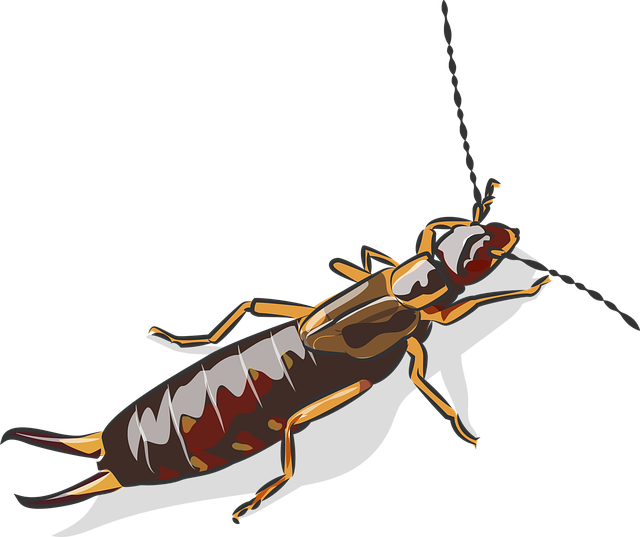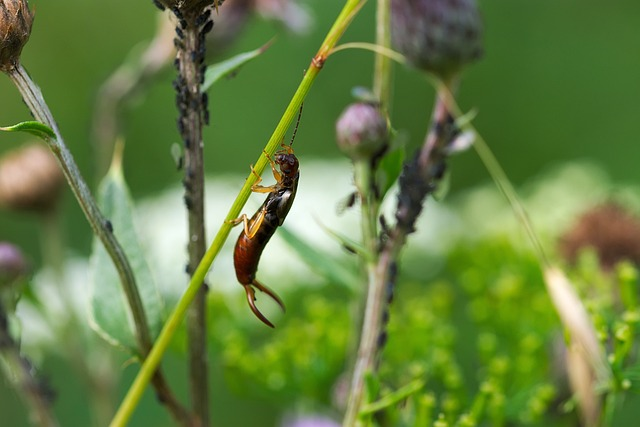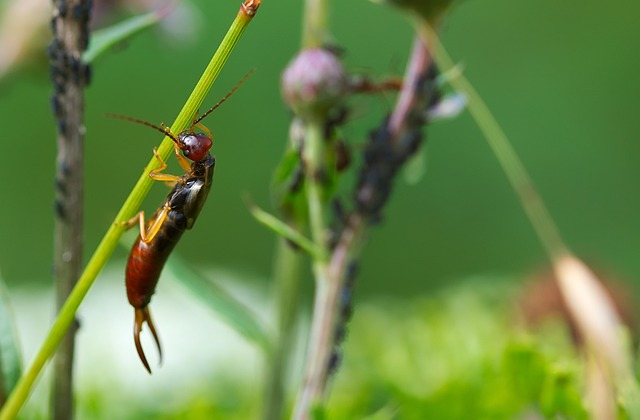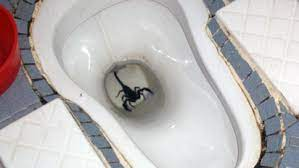Are earwigs bad
Earwigs are insects that belong to the order Dermaptera. They are small, nocturnal creatures that are found in many parts of the world, including Europe, Asia, and the Americas. Earwigs are usually brown or black in color, and they have a pair of pincers on their abdomen, which they use to defend themselves and capture prey. The adult earwig is typically about an inch long, sometimes reaching up to three quarters of an inch, with a dark brown or black body and distinctive forceps (cerci) at the end of its abdomen. Adult earwigs have short wings folded under short wing covers, while immature earwigs are lighter in color and lack wings, with smaller pincers. Earwigs are often found in damp, dark, moist places, such as under rocks, mulch, and in compost piles near the ground, and they are often attracted to lights at night. They often hide in dark, cool, and moist places during the day. Despite their reputation as being aggressive and predatory bugs, earwigs are actually quite harmless to humans and do not bite or sting. In fact, earwigs are actually beneficial insects, as they help to control pest populations by feeding on other bugs, such as aphids and mites.
The name “earwig” comes from the Old English words “ēare” (ear) and “wicga” (wiggler), leading to the nickname “ear wiggler.” This etymology is tied to the myth that earwigs crawl into human ears, but in reality, these bugs do not invade ears or pose any threat to humans.

Here are a few questions we get asked a lot. Do earwigs do anything good? Yes, earwigs actually play an important role in the environment by helping to break down plant material and other organic matter. They also serve as a food source for other animals. Should I leave earwigs alone? Yes, it is best to leave earwigs alone if possible. They may look intimidating, but they are harmless to humans and are actually beneficial to gardens and outdoor spaces. However, when many earwigs are present, they can wreak havoc in gardens by feeding on soft fruits, vegetables, and other plants, especially in moist conditions, moist environments, and moist places near the ground. If they are in a place where they are unwelcome, like in the house, you can try to remove them by vacuuming them up or trapping them in a jar and releasing them outside. Earwigs inside homes are considered nuisance bugs, as they are attracted to moist environments and often enter through cracks or gaps in search of shelter.
Introduction to Earwigs
Earwigs are fascinating insects that have earned a bad reputation over the years, largely due to myths and misunderstandings. Known scientifically as members of the order Dermaptera, these so-called “ear creatures” are often mistaken for dangerous pests that might attack humans or crawl into human ears while they sleep. In reality, earwigs are nuisance pests mainly because of their appearance and occasional presence indoors, but they rarely pose any real threat to humans. The myth that earwigs invade human ears is just that—a myth. While their name comes from the Old English “ear wicga,” meaning “ear creature,” there is no evidence that earwigs seek out human ears or cause harm in this way.
Despite their intimidating pincers and nocturnal habits, earwigs are actually beneficial insects in many environments. They feed on other insects, such as aphids and caterpillars, helping to keep populations of garden pests in check. Earwigs also consume decaying organic matter, playing a role in breaking down plant debris and recycling nutrients in the soil. While they can sometimes become nuisance pests when they enter homes or damage plants, their presence in gardens is often more helpful than harmful. Understanding the true nature of earwigs can help dispel their bad reputation and highlight their important role in the ecosystem.
Do earwigs make noise?
Earwigs do not make noise in the same way that many other insects do, such as by rubbing their wings together or by stridulating. However, they do have small, sharp mandibles that they use to chew and manipulate their food, and these mandibles can sometimes make a clicking or crunching noise when they are being used. In addition, earwigs are capable of secreting a foul-smelling substance from glands located on their thorax, which they use as a defense mechanism to deter predators. This substance may make a hissing or popping noise when it is released.
Despite their reputation as being aggressive and predatory insects, earwigs are generally not aggressive toward humans and will only use their mandibles or secretions in self-defense if they feel threatened. They are not known to make any other types of noise.
Where do earwigs get their name?
Earwigs get their name from an old superstition that they crawl into people’s ears while they are sleeping and burrow into their brains. This belief likely arose due to the fact that earwigs are nocturnal insects that are often found in damp, dark places, such as under rocks and in compost piles, and they are attracted to light at night. However, there is no scientific basis for this belief, and earwigs do not have the ability to crawl into people’s ears or burrow into their brains.
The scientific name for the order of insects to which earwigs belong, Dermaptera, comes from the Greek words “derma,” which means skin, and “pteron,” which means wing. This name refers to the fact that earwigs have wings that are covered by a thin layer of skin, rather than being hardened and protective like the wings of many other insects. The common name “earwig” is thought to be derived from this scientific name, as it is believed to be a corruption of the phrase “ear wing,” referring to the wings that are visible on the outside of the earwigs’ bodies.

Earwig Behavior and Habitat
Earwigs are primarily nocturnal insects, meaning they are most active at night. During the day, earwigs hide in moist, dark places to avoid the heat and dryness of the sun. Familiar hiding places include under rocks, mulch, decaying organic matter, and within cracks and crevices around the garden or home. They are also known to seek shelter in crawl spaces, beneath flower pots, and inside piles of leaves or debris. European earwigs, one of the most widespread species, are easily recognized by their reddish-brown color and distinctive forceps-like pincers at the end of their long, flat bodies. Earwigs dig chambers in the ground to lay their eggs and may burrow as deep as six feet. Rich garden soil with a southern exposure is a preferred habitat for earwigs, as is moist conditions.
When night falls, earwigs emerge from their hiding spots to feed. Their diet is quite varied—they eat other insects, such as aphids and caterpillars, as well as soft-bodied insects and insect eggs. This makes them beneficial for controlling certain garden pests. However, earwigs feed on a wide range of plant material, including flowers, fruit, corn silks, and the tender parts of garden plants and fruit trees. European earwigs can destroy sweet corn by feeding on the silks, causing poor kernel development. Earwig feeding damage can appear as ragged holes in leaves, chewed petals, or nibbled fruit, especially when populations are high. Moist summer conditions tend to favor higher populations of earwigs in gardens.
To prevent earwigs from becoming a nuisance, it’s important to reduce their favorite hiding places. Seal cracks and crevices around your home, remove piles of debris, and keep garden beds tidy. Trapping is another effective method—simple traps can be made using rolled-up corrugated cardboard, burlap bags, or shallow containers filled with a little vegetable oil to attract and trap earwigs overnight. Earwigs can cause substantial damage to seedling vegetables and annual flowers. By understanding where earwigs live and what they feed on, you can take practical steps to prevent earwigs from wreaking havoc in your garden or home, while still allowing these beneficial insects to play their part in the ecosystem. Seal entry points around the house using caulking and weather stripping to prevent earwig intrusion.
What do earwigs bites look like?
Earwigs are not known to bite humans, as they do not have the necessary mouthparts or venom to do so. However, they do have small, sharp mandibles that they use to chew and manipulate their food, and they can use these mandibles to pinch or pinch skin if they feel threatened or are handled roughly. An earwig pinch is generally not very painful and should not cause any lasting damage, although it may leave a small, red mark on the skin that may resemble a bite.
If you believe you have been bitten by an earwig, it is important to wash the area thoroughly with soap and water to help prevent infection. If you experience any unusual symptoms, such as redness, swelling, or pain, or if you have any concerns about the bite, it is a good idea to contact a healthcare professional for further evaluation and treatment.
How to get rid of earwigs in your apartment?
If you are experiencing an earwig issue in your apartment, it is important to identify the problem and address it promptly to prevent further infestation. There are several steps you can take to try to control and eliminate them. Here are eight simple steps to help out. These steps can also be applied to any other insects in your apartment. Earwigs can be brought indoors, often by accident, and are typically seeking darkness and moisture.
- Remove any sources of moisture that may be attracting the earwigs. Earwigs are attracted to damp, humid environments, so it is important to fix any leaks or other sources of moisture in your apartment. Be sure to check and maintain air conditioning units, as they can be a source of moisture and a potential entry point for earwigs.
- Seal any cracks or crevices around windows, doors, and pipes. Earwigs can enter your apartment through small openings, so sealing these areas can help prevent them from entering. Do not provide earwigs with easy access or favorable conditions by neglecting to seal gaps or reduce moisture.
- Use a dehumidifier to reduce humidity levels in your apartment. Earwigs are less likely to thrive in dry environments.
- Use a vacuum cleaner to remove earwigs and their eggs from areas where they are found. Be sure to dispose of the vacuum bag or contents after vacuuming to prevent the earwigs from escaping.
- Use sticky traps to capture earwigs. These traps can be placed in areas where earwigs are commonly found, such as near doors and windows or in damp, humid areas. For DIY traps, you can use bacon grease as an attractant in a shallow can or container, and add soapy water to drown the trapped earwigs.
- Use natural earwig repellents. Some options include placing bay leaves, cucumber peels, or cloves in areas where earwigs are found, as these substances are believed to repel earwigs.
- Consider using chemical insecticides as a last resort. Insecticides can be effective at controlling earwigs, but they may also be toxic to other insects and animals. Always follow label directions carefully for safe and effective use, and apply insecticides in the late afternoon when earwigs are most active for best results.
It is also a good idea to regularly clean and declutter your apartment to remove potential hiding places for earwigs.
European earwig

European earwigs, also known as common earwigs, are small insects with flattened bodies and two large pincers at the end of their abdomen. They are typically reddish-brown in color and can reach up to 1.5 inches in length. These insects are found throughout Europe, Asia, and North America. They feed on decaying plant matter, small insects, and fungi, and are an important part of the natural ecosystem. They are considered nuisance pests to some but are generally harmless to humans.
Are there Female earwig and how do they produce?
Female earwigs are insects that belong to the order Dermaptera. They are easily recognizable by their pincers, or “cerci,” located at the end of their abdomen. Female earwigs are usually larger than male earwigs and have longer cerci. Female earwigs use their cerci to defend themselves against predators and to help them search for food. They also use them to care for their eggs and young. Female earwigs lay eggs in small clusters in the soil and will guard them until they hatch. Earwigs generally prefer rich, moist garden soil for laying their eggs. Earwigs reproduce by laying eggs in a moist environment. The eggs are white and are laid in clusters, typically in the soil or in crevices. The female will lay anywhere from 10-90 eggs at a time. After the eggs hatch, the young earwigs will look like miniature adults but lack wings. They will molt several times before reaching adulthood, which typically takes about a year. Female earwigs tend to die before midsummer, typically after they have raised their young.
What if you get an earwig in your ear?
If an earwig gets into a human ear, it can cause discomfort, itching, and pain. It may also cause infection if not removed. If you suspect that an earwig has entered your ear, it is important to seek medical attention immediately to have it removed safely.
Factoid – Earwigs use their wings to produce sound. They rub their wings together to make a chirping noise, which they use to communicate with other earwigs.
Do earwigs hurt you?
Bottom line: Earwigs are more of a nuisance than a threat. If you’re seeing a lot of them, it’s usually a sign of excess moisture or organic debris around your home.
What does earwig damage look like?
Earwig damage can vary depending on the type of plant affected, but generally, it can appear as dead or discolored leaves, small holes in leaves or stems, or other signs of insect feeding. Unlike slugs, which leave behind slime trails and irregular, ragged holes, earwigs create cleaner, smaller holes without any slime residue. Earwigs can also become trapped in plant material or in traps set by gardeners to help control their population.
Conclusion:
It is best to leave these little insects alone. Earwigs live sometimes in human ears which you might not know about, best is to go see a doctor if you believe they are in your ear. Since earwigs hide outside you might find them in your home. The most common European earwig is the friendly ones. Let them live and be free.



